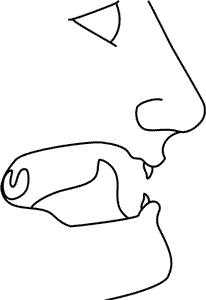How to Pronounce the Letter R
Some people find it difficult to pronounce the letter R. It can be challenging for several reasons:
- Articulation Complexity: The 'r' sound is produced by manipulating the tongue in a specific way, which can be tricky. It involves raising the back of the tongue towards the roof of the mouth without touching it, while the front of the tongue is slightly curled back. This precise positioning can be difficult to master.
- Variability Across Languages: Different languages and dialects have various 'r' sounds. For example, the rolling 'r' in Spanish and the guttural 'r' in French are different from the English 'r'. Learners may struggle if their native language has a different 'r' sound.
- Developmental Speech Patterns: Children often find 'r' sounds difficult and may not master them until later in their speech development. Some children substitute 'r' with 'w' (e.g., saying "wabbit" instead of "rabbit"), a pattern known as rhotacism.
- Physical Factors: Certain physical factors, such as tongue flexibility, can affect one's ability to produce the 'r' sound. Speech disorders or anatomical differences can also play a role.
- Lack of Exposure and Practice: For non-native speakers, lack of exposure to the English 'r' and insufficient practice can make it difficult to pronounce correctly. Regular practise and listening to native speakers can help improve pronunciation.

 Open your mouth slightly. Curl the tip of your tongue back without touching the roof of your mouth.
Open your mouth slightly. Curl the tip of your tongue back without touching the roof of your mouth.
 The tip of the tongue should not touch the gum ridge or your teeth when pronouncing the letter R.
The tip of the tongue should not touch the gum ridge or your teeth when pronouncing the letter R.
Tips for Improving your 'R' Pronunciation:
- Listen and Imitate: Listen to native speakers and try to imitate the sound. Pay attention to mouth movement, and how their tongue moves.
- Practice Exercises: Use exercises that focus on tongue placement and movement. For example, saying "red lorry, yellow lorry" repeatedly can help.
- Break It Down: Start by practicing the 'r' sound in isolation before moving on to words and sentences. Begin with words where 'r' is at the beginning (e.g., "red") and then practice words where 'r' is in the middle or end.
- Seek Feedback: Record yourself and listen to the playback to identify areas for improvement. You can also ask a native speaker or a language teacher for feedback.
- Use Visual Cues: Look in a mirror while practicing to see the position of your tongue and mouth. This can help ensure you're positioning your tongue correctly.
- Be Patient and Persistent: Improving pronunciation takes time and consistent practice. Be patient with yourself and keep practicing regularly.
With time and effort, pronouncing the 'r' sound will become more natural.
Now try it:-
Inside a word:-
alert - bleary - clearly - diary - fairy - marry - sorry - worry
At the end of a word:-
bear - care - dear - fear - hair - pair - rare - shore
At the beginning of a word:-
rack - ramp - rent - rise - right - road - rock - rook - room - root
Now try these ultimate tongue twisters, and don't forget you have to keep repeating them:-
Around The Rugged Rock
!Note - You will be glad to know that the rolling 'r' sound, also known as the alveolar trill, was a feature of Old and Middle English, but is no longer in use.
It
bugan to disappear from British English during the Early Modern English period, roughly between the 15th and 17th centuries.
By the late 18th century, the shift towards non-rhotic pronunciation (where the 'r' at the end of a word or before a consonant is not pronounced) was well underway, particularly in southern England. This change marked a significant departure from the older rolling 'r' sound.
Interestingly, the non-rhotic accent became prestigious and was associated with the upper classes and educated speakers, further cementing its use. In contrast, some dialects and regional accents in Scotland, Northern Ireland, and the West Country of England still use a form of the 'r' sound, although not typically a full rolling 'r'.
More tongue twisters here.

